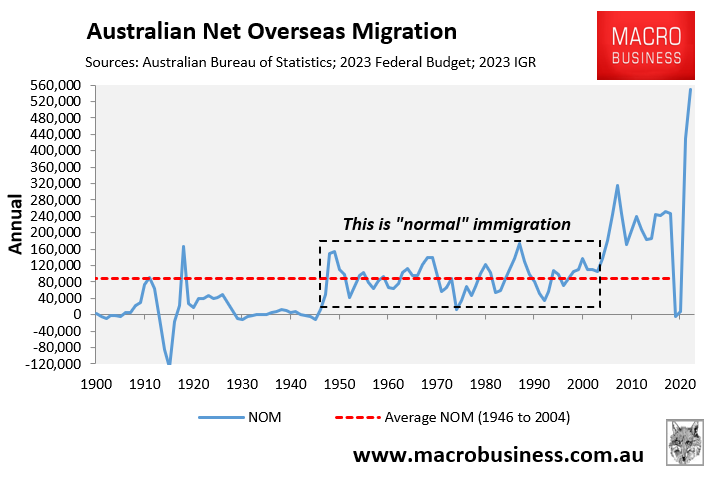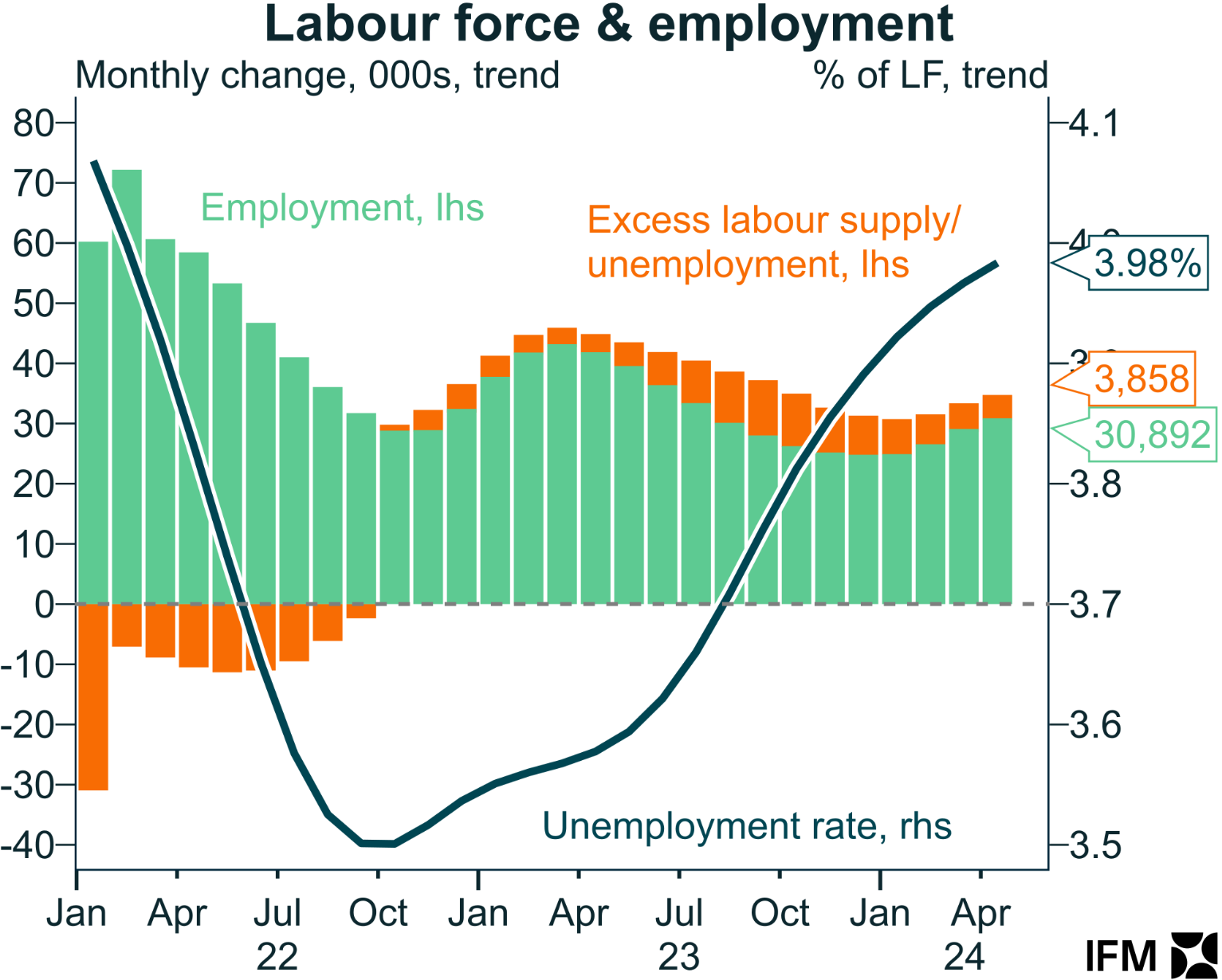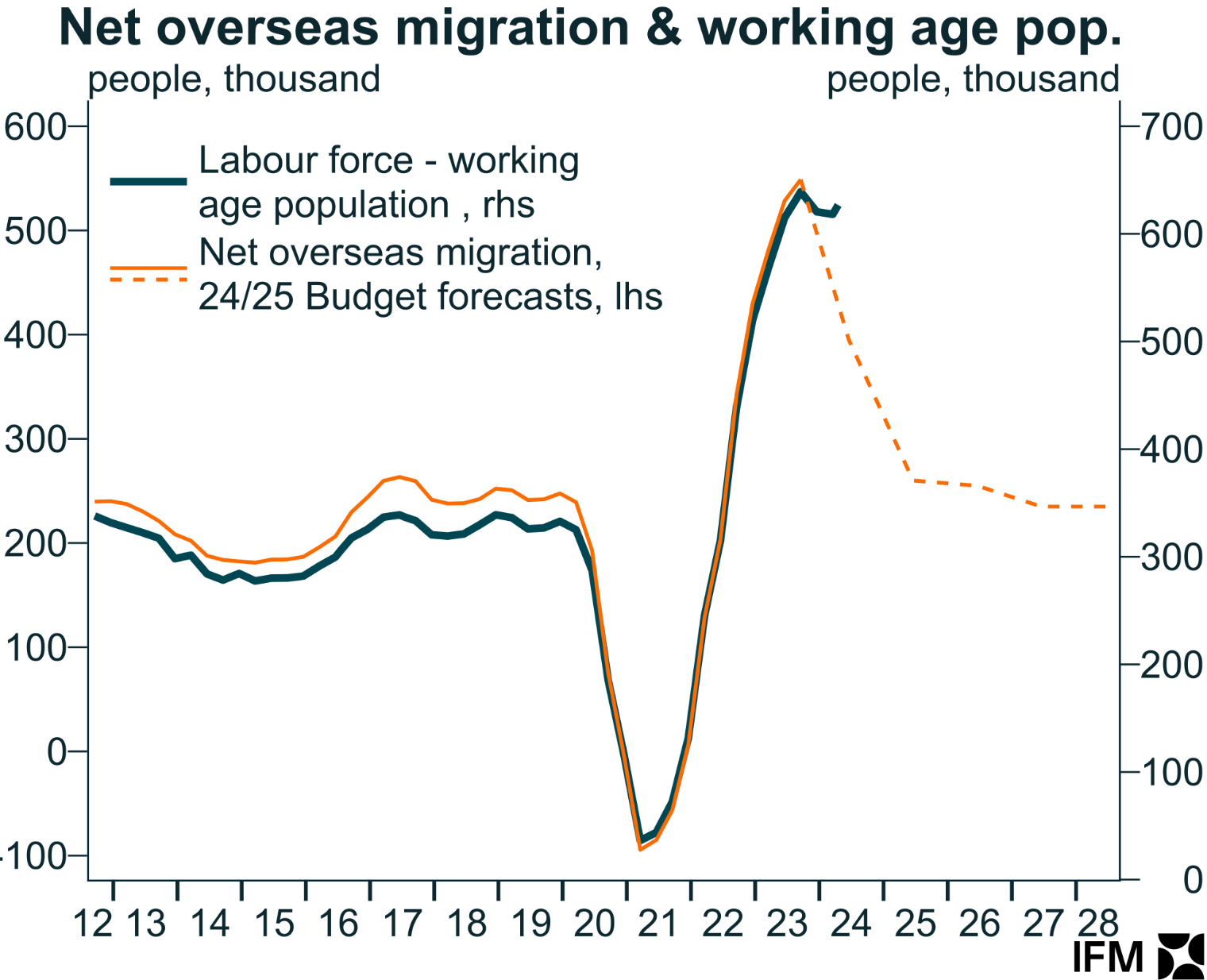For some time, the warnings have been apparent that Australia cannot create enough jobs to keep pace with record levels of net overseas migration.

Last week’s data from Seek should have sent alarm bells ringing, with the number of applicants per job ad surging by 8.6% in March to be tracking 55% higher than the corresponding time in 2019:

This week, the Australian Bureau of Statistics (ABS) labour market chickens officially came home to roost.
Wednesday’s Q1 labour price index release showed that Australian real wages resumed their downward march, growing by only 0.8% over the quarter against headline CPI inflation of 1.0%:

Then on Thursday, Australia’s official unemployment rate rose by 0.2% to 4.1%, beating economists expectations of a 3.9% unemployment rate:

Jobs are still being created. Overall employment grew by 38,500 in April, although all were part-time (+44,500) and full-time jobs declined (-6,000).
The problem is that job growth is being swamped by the growing labour supply via record net overseas migration:

The next chart from CBA highlights the key problem facing the labour market: Australia needs to create around 40,000 jobs per month to keep the unemployment rate stable, assuming a steady participation rate:

Achieving such strong job growth amid high interest rates and a per capita recession is an impossible task, which means that unemployment and underemployment must necessarily grow.
CBA Senior Economist Belinda Allen summed up the situation nicely in a note on Thursday:
“Mechanically we do expect the unemployment rate to continue to lift from here. The strong lift in the supply of labour is expected to continue, despite efforts to slow net overseas migration”.
“A below trend economy will continue to be unable to create enough jobs to match labour supply. We expect the unemployment rate to reach ~4½% by the end of the year”.
“The underemployment rate rose by 0.2%pts to 6.6%, still below where it was in January, but around the highest level in over two years”.
“Underutilisation, the broadest measure of spare capacity in the labour market sits at 10.7%”.
“Hours worked were flat over the month, but are now down 0.8% over the past year, another sign of a softening labour market, and the switch to part time”…
“These data points reinforce our central case scenario of a November start data to the RBA’s easing cycle”.
The federal budget has predicted lower net overseas migration in 2024-25, which would mean lower labour supply growth:

However, it remains to be seen whether net overseas migration will fall as quickly as the budget projects.
It is important to remember that the RBA has two mandates: price stability and full employment.
There is little chance of the RBA hiking rates into a weakening economy and deteriorating labour market.

